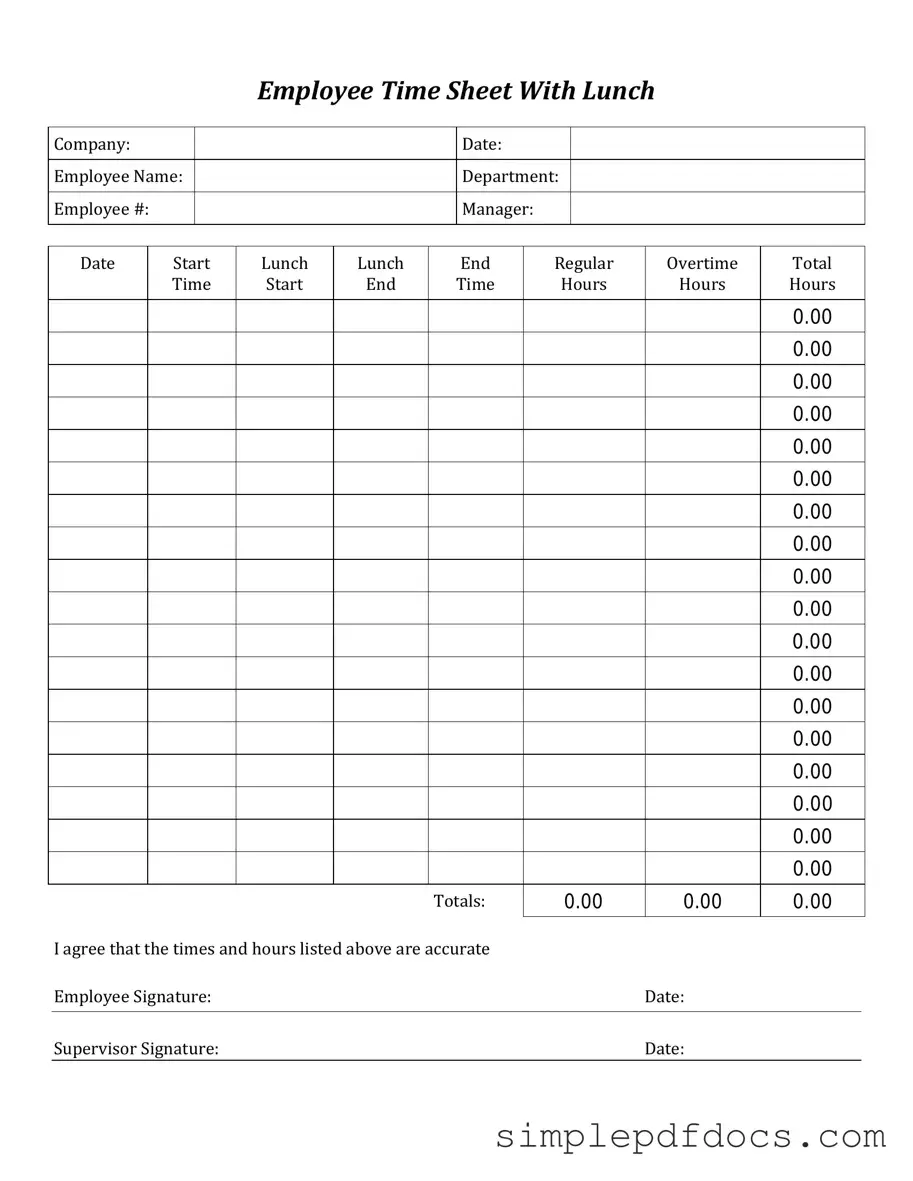Fill Your Time Card Form
The Time Card form is a document used by employees to record the hours they work during a specific pay period. This form helps ensure accurate tracking of hours for payroll processing and can be essential for both hourly and salaried workers. Understanding how to properly fill out and submit a Time Card is important for maintaining accurate records and receiving timely compensation.
Get Document Here
